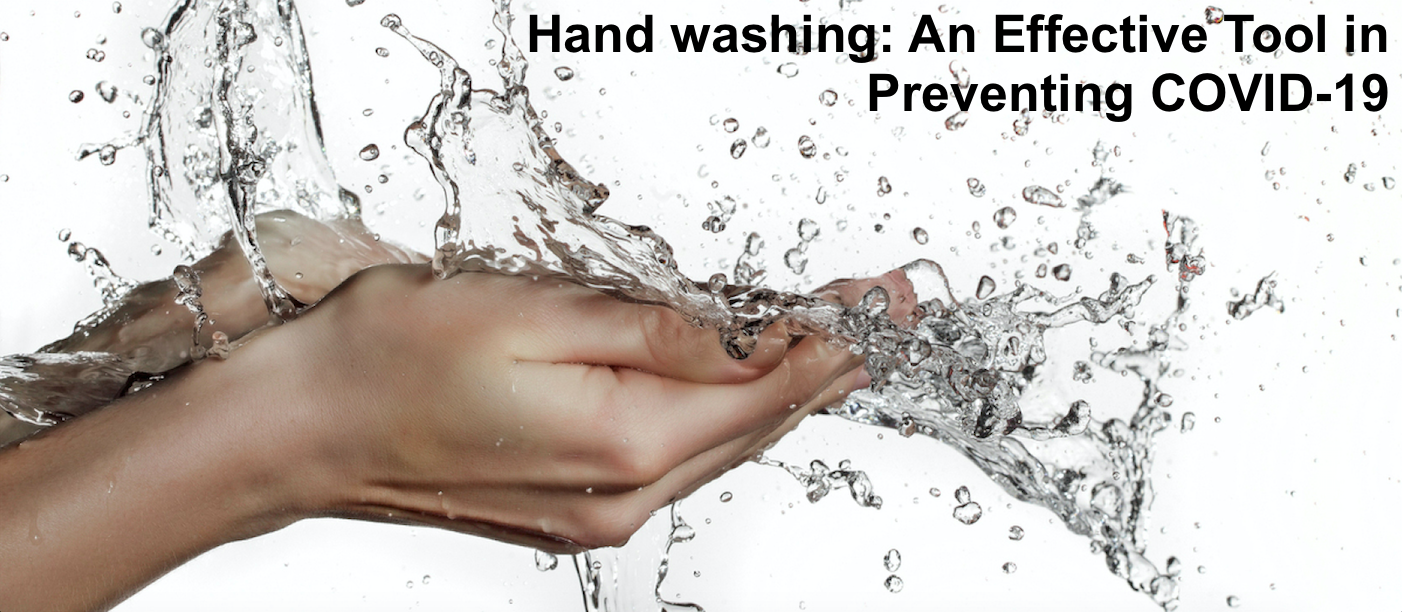Published March 12, 2021, 12:00 am
How Hand Washing can be an Effective Tool in Preventing COVID-19
How Hand Washing can be an Effective Tool in Preventing COVID-19
Regular washing of hands is one of the best ways to remove germs, prevent sickness and prevent germs from spreading to others. Whether you are at home, working, traveling, or out in the community, learn how hand washing with soap and water can protect you and your family. Hand washing with soap, along with other public health measures like maintaining physical distance, avoiding crowded places, practicing cough etiquette, and wearing a mask where recommended, remains one of our best defenses against the virus ten months after the pandemic began.
Hand washing was always one of the most efficient ways of containing diseases. It's a simple act that pays dividends in terms of maintaining one's health and safety. Hand washing is also one of the key pillars of the prevention of COVID-19. Now that we embrace the new standard and live with COVID-19, hand hygiene needs to be an essential part of our daily routine and life as we experience this pandemic and beyond to protect us against disease," said Dr. Poonam Khetrapal Singh, Regional Director, WHO South-East Asia.
The transmission of COVID-19 is primarily direct, indirect, or close contact with infected persons through mouth and nose discharges,so that's why washing hands with soap and running water is critical. To avoid the spread of COVID-19 and other COVID behaviors, handwashing at regular intervals is essential, whether after coughing or sneezing, caring for the sick, using the toilet, eating,
preparing food, or handling animals or animal waste. When you touch joint surfaces like door knobs or handles or when you come home from a visit to a public place, hand washing will save you and others.
It is also crucial to promote hand hygiene at all levels of health care. “Hand hygiene is well accepted as one of the primary ways to reduce the risk of health-related infection and improve patient safety," said the Regional Director.
“The pandemic is still between us and is far from over. We have to remember the basics we as individuals can do to stay safe,” she said.
The theme of this year's Global Handwashing Day is Hand Hygiene for All and calls for universal hand hygiene across society. Handwashing with soap must be a priority now and in the future to control the virus and ensure better health outcomes beyond the pandemic.
When to wash hands: Key times
Washing your hands frequently can help you and your loved ones stay healthy, especially when germs are likely to spread:
● Before and after preparing food
● Before and after eating food
● Before and after caring for a sick family member who is vomiting or has diarrhea at home
● Before and after a cut or wound is treated
● After going to the toilet
● After changing a child's diapers
● After sneezing, coughing, or blowing your nose
● After touching an animal waste, animal feed, or animal
● After handling pet treats or pet food
● After touching garbage
Based on data from several studies, we developed the guidelines for the list of crucial washing times. There may also be other times when washing hands is essential.
How to wash hands: Steps to follow
It is easy to wash your hands and it is one of the best ways to prevent germ spread. Clean hands can stop germs from spreading from one person to the next and from your home and work to the daycare facilities and hospitals throughout the entire community.
Follow these five steps every time.
1. Wet your hands (warm and cold) with clean running water, turn off the tap, and apply soap.
2. Massage your hands with soap by rubbing them. Lather your hands' backs between your fingers and under your nails.
3. For at least 20 seconds, scrub your hands. Do you require a timer? Two times through the song "Happy Birthday," hum it from beginning to end.
4. Rinse your hands thoroughly under running water.
5. Dry your hands with a clean towel or let them air dry.
When to use hand sanitizers
In most cases, washing hands with soap and water is the most effective way to eliminate germs. If soap and water are not readily available, you can use an alcohol-based hand sanitizer containing at least 60% alcohol instead. You can tell if the sanitizer contains at least 60% alcohol by looking at the product label.
In many situations, hand sanitizers can quickly reduce the number of germs on the hands. Nonetheless,
● Sanitizers don't kill all kinds of germs.
● When hands are visibly dirty or greasy, hand sanitizers may not be as effective.
● Hand sanitizers may not effectively remove harmful chemicals such as pesticides and heavy metals from the hands.
How to Use Hand Sanitizer
● Apply the gel product to one hand's palm (read the label to learn the correct amount).
● Your hands should be rubbing together.
● Rub the gel all over your hands and fingers until they are dehydrated. It should only take about 20 seconds to complete this task.
References:
1. Handwashing an effective tool to prevent COVID-19, other diseases. (2020, October 15). World Health Organization.
https://www.who.int/southeastasia/news/detail/15-10-2020-handwashing-an-effective-too l-to-prevent-covid-19-other-diseases
2. When and How to Wash Your Hands. (2020, November 24). Centers for Disease Control and Prevention. https://www.cdc.gov/handwashing/when-how-handwashing.html 3. Handwashing: Clean Hands Save Lives. (2021, January 11). Centers for Disease Control and Prevention. https://www.cdc.gov/handwashing/index.html
4. How to Protect Yourself & Others. (2021, March 8). Centers for Disease Control and Prevention.https://www.cdc.gov/coronavirus/2019-ncov/prevent-getting-sick/prevention.h tml
